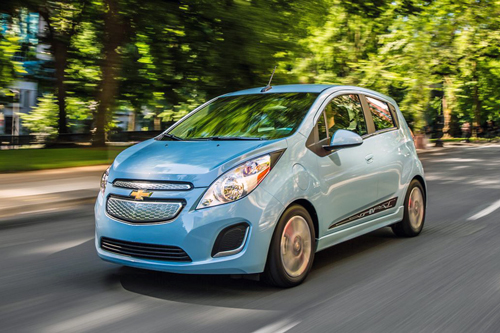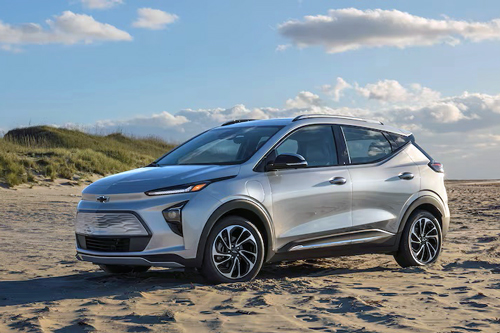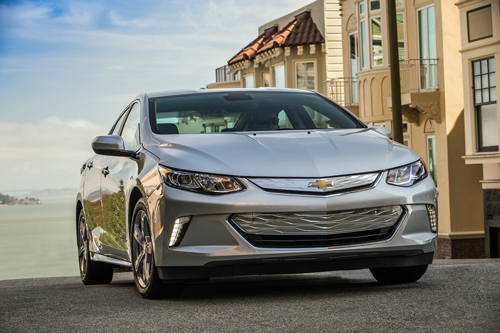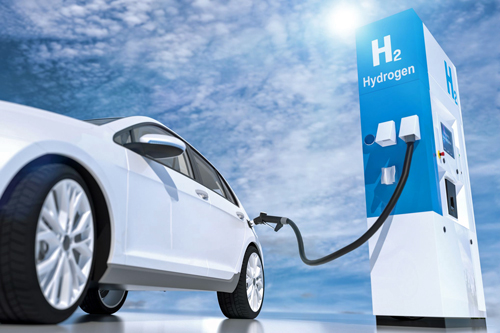Jim Kenzie has joined our team at Vicarious! Read his columns here, you don’t want to miss it!
“For it’s one, two, three strikes you’re out, at the old ball game.”
In the “old electric car game”, at least for General Motors?
Not so much.

Strike one?
That would be the EV1, aptly-named because it was the 1st “mass-produced” Electric Vehicle (EV1, geddit?) from a mainline manufacturer since the Baker electric walked the plank in 1914.
“Mass-produced” in quotes because GM built only 1,117 EV1s in the late-1990s. Not a very large “mass”.
GM was so confident in the public’s acceptance of the EV1 that they sold exactly zero of them. They were only leased, and had to be returned to GM at the end of the term. All were crushed, apart from a couple dozen that went to various museums.
GM poured a quadrazillion dollars (rough estimate…) into the EV1. Down the drain.

Strike two?
The Korean-built Spark EV. It sold better than the EV1 – hard not to – but after a 90% drop in quarterly year-to-year sales (2020 to 2021) GM pulled the plug (sorry, but you had to know that was coming…) on it too.
Another quadrazillion dollars. Into thin air.
Strike 3?
The Bolt was next. It was actually fun to drive, and sold in six figures in its seven-year lifespan. Electric cars fans howled at GM’s cancellation of Bolt, but it also lost tons of money. Last time I looked, a business is supposed to be profitable.
Yet another quadrazillion dollars. Up in smoke.

Strike 4?
Yeah, I know, the baseball analogy falls apart here.
The Chevy Volt is a bit of an outlier. It doesn’t fit into my troika of electric car failures, because it actually made a bit of sense. It carried its own recharging infrastructure; an on-board gasoline engine would fire up when the battery was dying, meaning YOU wouldn’t be dying out in the middle of nowhere with a dead battery. Mazda and BMW have followed with similar designs.
The Volt fits into my general theme though. At a press conference last year, GM’s CEO Mary Barra announced that GM’s future would be electric. That same day, although not at the same press conference (I wonder why…) GM announced that Volt was dead too.

Another quadrazillion dollars. Houdini couldn’t have made it disappear faster. How do these people keep their jobs?
The plan according to Barra is to make all their trucks – Corvette aside, the only vehicles GM makes now – electric.
Terrific. Vehicles which already cost upwards of six figures, costing several grand more than fuel-powered trucks. Vehicles which already weigh upwards of 2,500 kg, adding 500 kilograms each to the loads our roads and bridges have to bear.
Hey, I’m all for cleaner air. But according to Environment Canada, the official tree-hugging branch of the federal government, passenger vehicles – cars and light trucks – account for 11% of Canada’s atmospheric pollution. So if tomorrow, every vehicle in the country were powered by the sheer might of Elon Musk’s ego, the air would still be 89% as dirty as it is now.
Whoopee.
Obviously, that “overnight” scenario is a non-starter. The average age of a vehicle in Canada is about 15 years, so it would take that long before everybody was in an electric vehicle. Assuming they could afford one.
Despite several thousands of dollars of bribes from various levels of government to subsidize rich people’s playtoys, electrics currently (ho ho…) account for only single-digit percentages of the market.
Also, where do we get the electricity to replace all that fossil fuel?
We’ve pretty much tapped out our hydro-electric capacity. What we do have is typically generated far from our urban centres where it is needed, and electricity does not travel well.

Windmills are a Dutch dream. The Americans are already looking at burning more soft coal. Let’s not even think about mining all that poisonous lithium, recycling those batteries, or the massive number of recharging stations we’d have to build. It takes about four times as long to recharge a battery as to refuel a vehicle, so we’d need four times as many of them.
The only feasible alternative is nuclear. Hands up all those who want a Fukushima, Three Mile Island or Chernobyl in their neighbourhood.
The only answer for cleaner air is to chase down the biggest polluters. Namely, agriculture, and, believe or not, cement production, both at around 35%. Taking a mere 5.5% out of those two industries would achieve the same result that the electric car fantasists are dreaming of, and which sounds way more feasible.
The only automobile power source that has any long-term chance is hydrogen-powered fuel cells, which are a lot closer to feasibility than most people think. I’ll expand on this topic at another time.
To me, the fundamental problem here is that our politicians are mostly lawyers, not engineers. Lawyers can’t understand this technology (sorry, Dad…). If engineers ran the country, we’d all be much better off.
Why yes, I am an engineer. Why do you ask?



